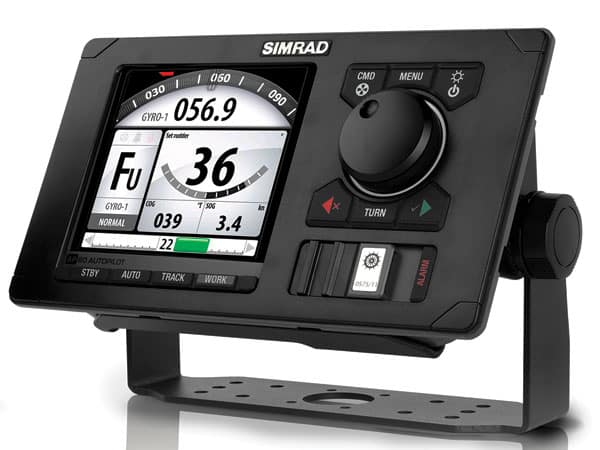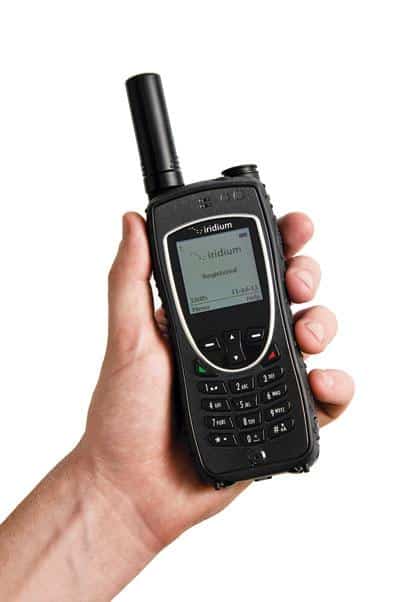
Simrad AP70
Pirate-Fighting Pilot
Simrad has long been known for its excellent autopilots. With the introduction of AP70 and AP80 (shown), Simrad has created a powerful tool for big-boat navigation that supports multiple rudders, pods and thrusters. The AP70 and AP80 ($1,600 and $3,500 respectively) provide user-selected auto and navigation modes, including options for slow-speed maneuvering, helicopter deployment and pirate evasion. Redesigned with intuitive graphics, the AP70 and AP80 feature an ultrabright-sunlight-viewable 5-inch color SolarMax Plus TFT bonded display. They operate on the CAN bus using SimNet for protocol command and control and NMEA 2000-compatible cabling for networking. Their rugged aluminum housings can be mounted flush or on a bracket. _Simrad; [www.simrad-yachting.com
](http://www.simrad-yachting.com/)_

Seeing Stars
Seeing the new STAR display ($2,995) from Green Marine makes you wonder why a “long and slender” display system was not invented earlier. STAR stands for STretched Aspect Ratio. How stretched? The active display area is just slightly smaller than 19 by 4 inches. STAR is part of Green Marine’s suite of Bridge Command products, which also include conventionally shaped 19- and 24-inch displays ($9,895 and $12,895 respectively). The idea is for STAR displays to fill gaps in unused console space, which on many yachts includes overhead cabinetry. STAR works by taking the video feed to a display and dividing it into thirds horizontally. Imagery from the upper two of these one-third bands is allocated to two individual STAR displays. Ideally, STAR would be used to show NMEA 2000 gauge software, vessel alarm readouts and security camera feeds. Bridge Command systems come with a controller ($695) that allows the all-sunlight-viewable screens to be dimmed as a group or individually for nighttime running, and dimmed to black if desired. Bridge Command, 724-392-4092; www.bridgecommand.com

Satcom Twofer
Two things distinguish the latest Iridium satellite telephone from its predecessor, the model 9555: The Iridium Extreme is tougher, and it incorporates an emergency beacon. The Extreme (about $1,450) is ruggedized to military specifications and has a programmable, GPS-enabled, one-touch SOS button. Unlike the popular SPOT beacon, the Extreme is a certified satellite emergency notification device (SEND for short) that lets you specify an SOS contact, send a one-touch distress message and notify the recipient of your precise location. Friends and family can track an Iridium Extreme user’s real-time status and location. Unlike SPOT, a one-way communicator that’s not a certified SEND, Extreme offers users ashore and afloat confirmation that messages have been received. For onboard connectivity beyond the phone screen, Iridium has AxcessPoint Connect, optional hardware about the size of a deck of cards that sells for less than $200. AxcessPoint Connect tethers to the Extreme or Iridium 9555 handsets, creating a Wi-Fi hot spot for nearby mobile e-mail and data downloading devices. Iridium, 866-947-4348; www.iridium.com









